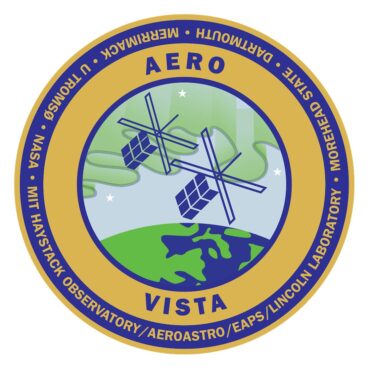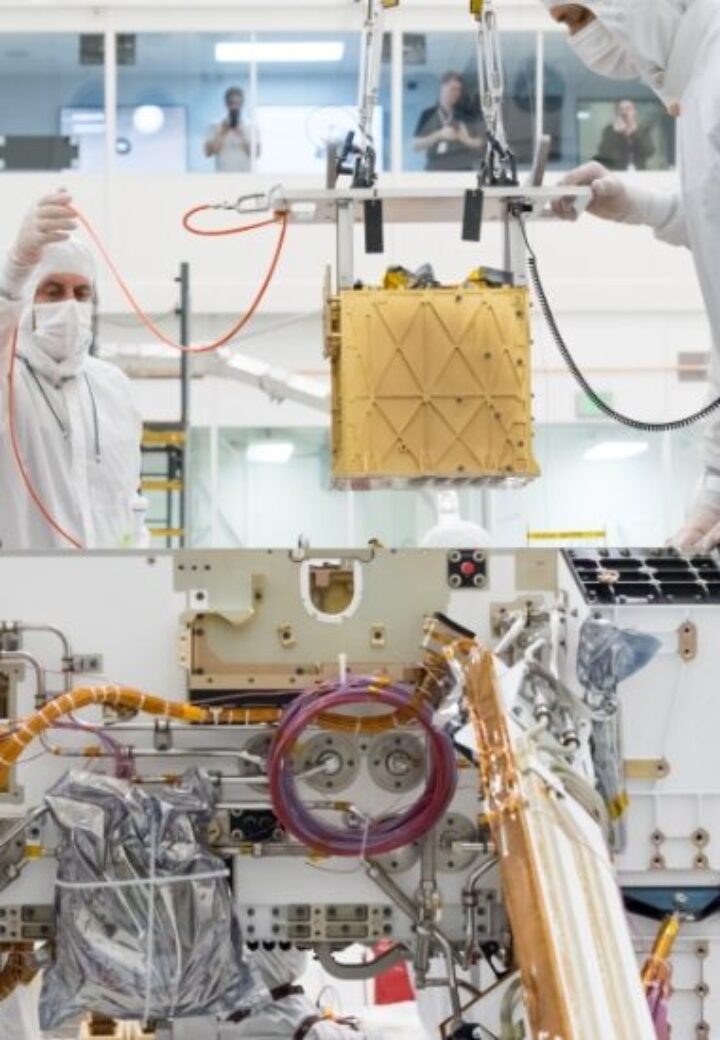
Space Technology
Scientific, technological, and strategic considerations have all fueled Haystack’s expanding space ambitions over the past few years. Scientifically, low-frequency astronomy (below ~20 MHz) is inaccessible from the ground as a result of ionospheric distortion, and access to space allows us to address long-standing questions about Earth’s aurora (the subject of the ongoing AERO-VISTA project) or the particles and fields that link the sun to the Earth.
At slightly higher frequencies (50–100 MHz), orbiting the moon would allow confirmation and refinement of the EDGES detection of the signature of Cosmic Dawn, the turn-on of the first stars, in an environment free of terrestrial sources of interference.
At millimeter frequencies, access to space promises new breakthroughs in Event Horizon Telescope (EHT) science. The EHT is currently an Earth-sized telescope employing Earth-rotation synthesis to build up an imaging dataset over many hours. Access to space allows us to extend the longest baselines, making more distant black holes spatially resolvable, and to orbit at much faster rates, allowing images to be reconstructed on shorter timescales in order to time-resolve characteristics of the nearest but highly time-variable supermassive black hole, Sgr A*.
Technologically, space interferometry is also a high priority in low-frequency astronomy, as it is, for example, the only method to adequately resolve complex radio bursts emerging from the sun. Haystack, a world leader in very long baseline interferometry (VLBI) is well poised to provide the needed technology. In addition, high-bandwidth laser downlink provided through a vital partnership with MIT Lincoln Laboratory resolves a primary obstacle to capable interferometry. Other Lincoln Lab developments (notably the vector sensor antenna) also play a primary role in planned Haystack space activities.
Anticipated dramatic increases in radio-frequency interference (RFI) due to the explosion of orbital communication satellite networks operating at ever-higher frequencies threaten to compromise ground-based radio astronomy, making it of utmost importance to establish a scientific space-based observational capability.
Spotlight Projects

The Great Observatory for Long Wavelengths (GO-LoW)
An interferometric array of thousands of identical small satellites to make the first map of the low-frequency sky.

MOXIE: Mars Oxygen ISRU Experiment
Demonstrating conversion of atmospheric CO2 to oxygen on the Martian surface.

AERO-VISTA CubeSat mission
A NASA twin CubeSat mission for auroral radio science and space interferometry technology.



